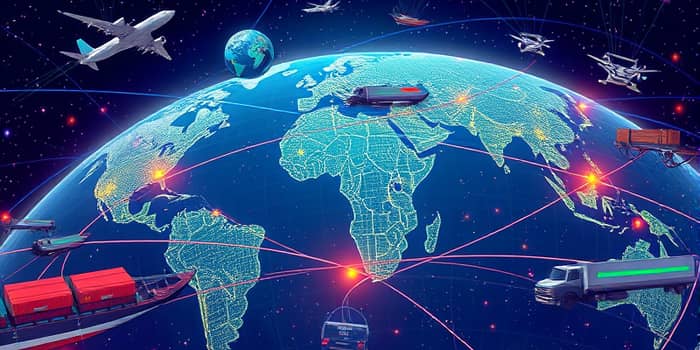
As businesses navigate an increasingly complex global environment, understanding and mitigating supply chain disruptions has never been more critical. From lingering effects of the pandemic to rising geopolitical tensions, organizations must adapt swiftly to protect their operations and stakeholders.
In 2025, supply chains face unprecedented challenges in supply chains influenced by multiple forces. Recovery from COVID-19 disruptions collided with new geopolitical flashpoints, creating an environment of constant uncertainty.
Material shortages, compliance burdens and talent gaps amplify risks. What were once isolated hiccups now reverberate across industries and borders, creating cascading effects in retail, automotive, semiconductors and beyond.
To build resilient portfolios, leaders must first recognize the primary threats undermining stability:
Organizations thriving amid disruption share common strategic pillars designed to absorb shocks and maintain agility.
Key market movements are redefining how organizations approach resilience and competitiveness:
While overarching trends impact all industries, certain sectors experience unique pressures. In the automotive industry, rising tariffs and rapid technology shifts—such as electrification—are forcing manufacturers to reevaluate sourcing strategies and production footprints.
Semiconductors and data centers, meanwhile, face critical bottlenecks from geopolitical tensions in key manufacturing regions. The complexity of specialized fabrication processes and concentrated supplier bases makes diversification both challenging and essential.
Rising tariffs and trade barriers have injected significant cost pressures into global operations. Many companies report increased unit costs and longer lead times, directly impacting profit margins and customer satisfaction.
Conversely, proactive investments in resilience often yield long-term cost reductions and stability. Firms that allocate resources to digital tools, strategic warehousing and alternative sourcing see faster recovery times and reduced inventory write-offs.
Looking ahead, supply chains will remain under pressure from geopolitical volatility, climate risks and evolving consumer demands. Maintaining agility through continuous innovation and strategic foresight will be paramount.
Emerging technologies such as AI, digital twins and Industry 4.0 solutions promise to further enhance AI-powered predictive capabilities. These advancements will empower organizations to anticipate disruptions and orchestrate seamless responses at scale.
Ultimately, the journey to resilience is ongoing. By embracing diversification, fostering collaboration and championing technological integration, leaders can transform supply chains from vulnerable networks into robust, adaptive systems prepared to withstand future shocks.
Building a truly resilient portfolio requires vision, commitment and a willingness to evolve. The time to act is now—invest in resilience today to secure the competitive advantage of tomorrow.
References













